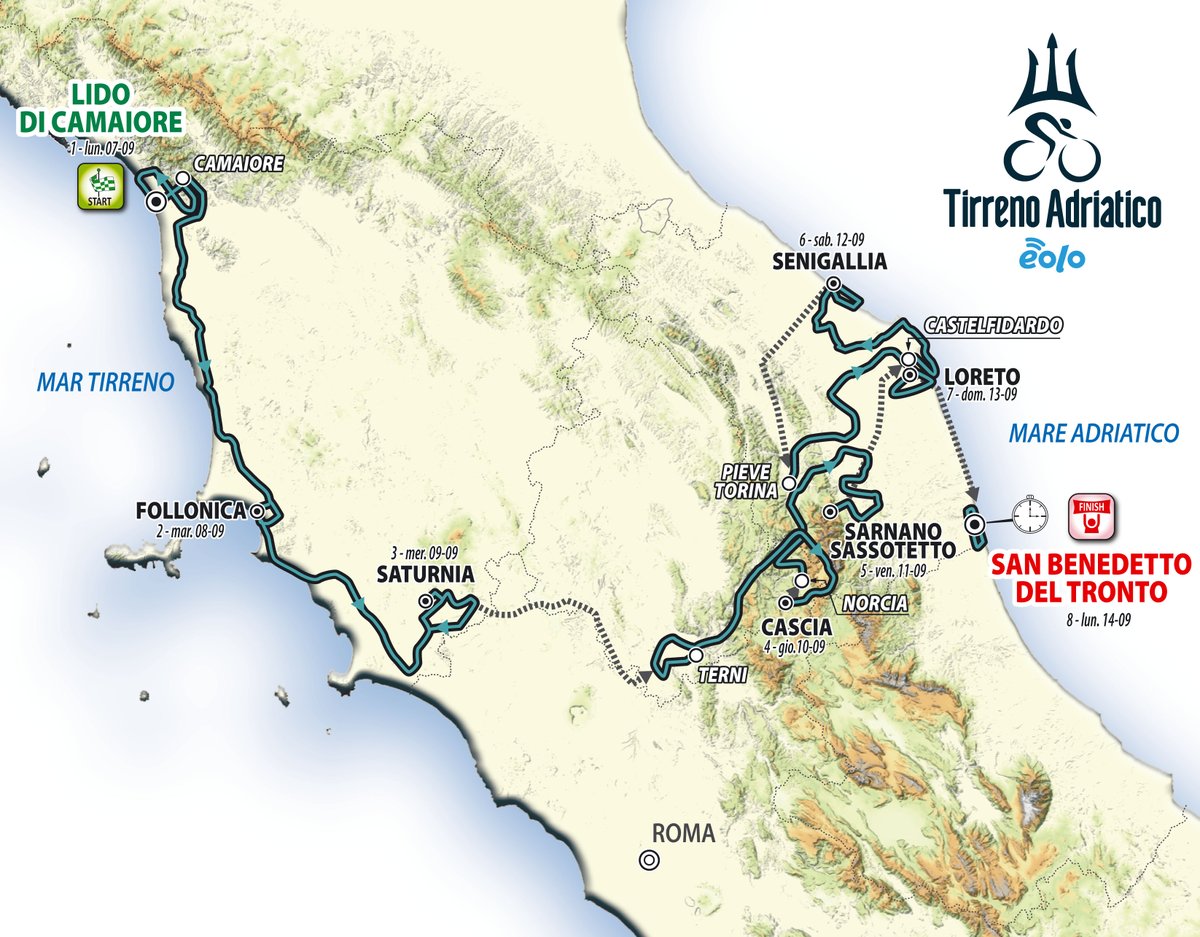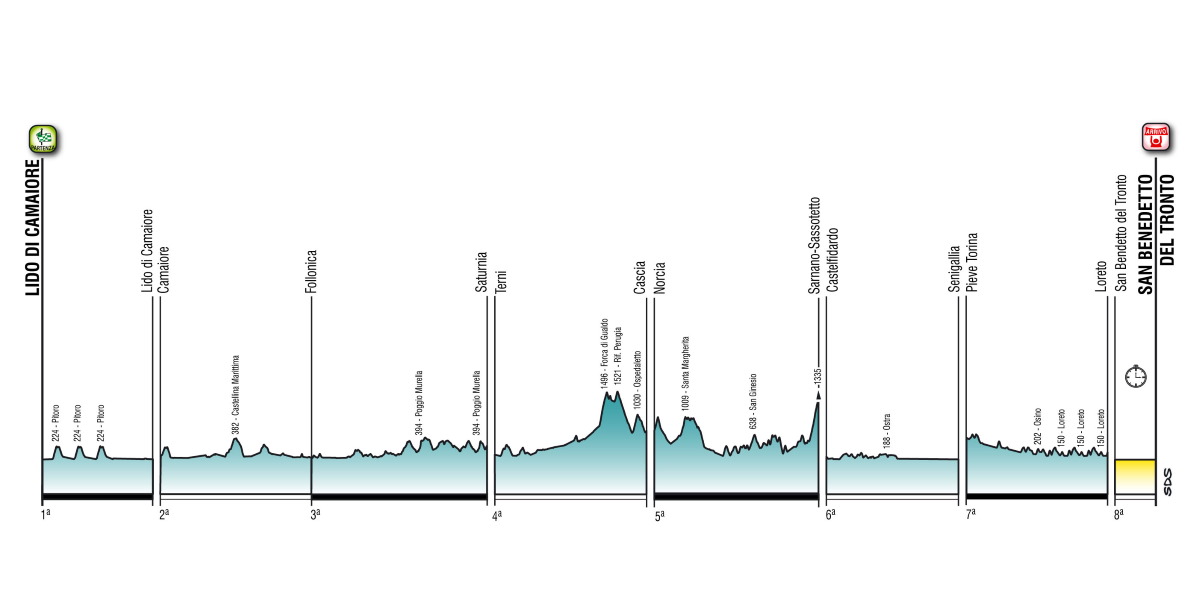Tirreno-Adriatico adds extra stage
Eight-day September stage race becomes key test before Giro d'Italia

This year's Tirreno-Adriatico, rescheduled for September 7-14, will consist of eight stages instead of the usual seven, offering an extra opportunity for the climbers in Umbria, as well as stages for the sprinters and finisseurs.
The Italian stage race will be held during the second week of the Tour de France but hopes to attract many of the riders who will then go on to target the Giro d'Italia in October, including Vincenzo Nibali (Trek-Segafredo), Remco Evenepoel (Deceuninck-QuickStep) and 2019 corsa rosa winner Richard Carapaz (Team Ineos).
A number of big-name sprinters including Dylan Groenewegen (Jumbo-Visma) and Fernando Gaviria (UAE Team Emirates) are also expected to head to Italy as their teams focus on the overall classification at the Tour de France. Mathieu van der Poel (Alpecin-Fenix) is also expected to ride Tirreno-Adriatico as preparation for the October Classics.
Primož Roglič (Jumbo-Visma) beat Adam Yates and Jakob Fuglsang in 2019 but the Slovenian will ride the Tour de France in 2020 and thus will not defend his trident trophy. This year's edition was scheduled for March but was postponed as the COVID-19 coronavirus pandemic emerged in Italy.
Tirreno-Adriatico again starts on Tuscany's Tyrrhenian coast, with a road race stage around Lido di Camaiore. Stage 2 heads into the hills for the steep finish to Follonica and stage 3 to the natural spa resort of Saturnia.
The next stage is held in Umbria, with the new 194km route snubbing the Lazio region. It is the first real mountain stage, with a climb up the Forca di Gualdo which leads to the plain of Castelluccio and then up to the Rifugio Perugia at 1521 metres. A descent to Norcia leads to the climb to Ospedaletto and a fast descent to the finish in Cascia.
Stage 5 is similar and continues in the Monti Sibillini. The climbs of San Ginesio, Gualdo and Penna San Giovanni all feature before the final ascent to Sassotetto from Sarnano. It is 14.2km long with an average gradient of 5.8%, with one section at 12%. The last kilometres of the stage coincide with the final climb to Sassotetto. The climbers will have to attack here to distance the strongest time triallists who can use the final TT on the Adriatic coast to pull back vital seconds.
Get The Leadout Newsletter
The latest race content, interviews, features, reviews and expert buying guides, direct to your inbox!
Stage 6 to Senigallia is a day for the sprinters, while stage 7 to Loreto includes the steep 'Muri' climbs that traditionally feature at Tirreno-Adriatico.
They are all concentrated in three laps of a circuit that climbs up to the finish in Loreto. The last gradient hits 10% in the closing kilometres.
The final individual time trial up and down the San Benedetto del Tronto seafront will again crown the winner, with the empty roads of March expected to be filled with holidaymakers enjoying the end of the Italian summer.
"Thanks to the eight stages we have been able to make the race a bit harder and to balance the stages for sprinters, for finisseurs and for climbers in addition to the usual final ITT," said RCS Sport Race Director Stefano Allocchio.
"Despite the change of date, the local authorities have helped us organize a top quality Tirreno-Adriatico. We will have almost all the riders, who will then participate in the Giro d'Italia in October and we are convinced that, as in recent years, it will be a Race of the Two Seas of the highest level."


Stephen is one of the most experienced member of the Cyclingnews team, having reported on professional cycling since 1994. He has been Head of News at Cyclingnews since 2022, before which he held the position of European editor since 2012 and previously worked for Reuters, Shift Active Media, and CyclingWeekly, among other publications.